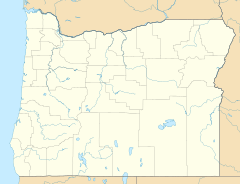Williamson Mountain facts for kids
Quick facts for kids Williamson Mountain |
|
|---|---|
| Highest point | |
| Elevation | 6,304 ft (1,921 m) NGVD 29 |
| Prominence | 1,024 ft (312 m) |
| Geography | |
| Location | Deschutes County, Oregon, U.S. |
| Parent range | Cascades |
| Topo map | USGS Elk Lake |
| Geology | |
| Mountain type | Shield volcano |
| Last eruption | Pleistocene |
| Climbing | |
| Easiest route | Hiking |
Williamson Mountain is a cool peak located in the Cascade Range in the state of Oregon, U.S.. It stands tall at about 6,304 feet (1,921 meters) above sea level. This mountain is named after a person named Lt. Robert S. Williamson. He was part of an important exploration team back in 1855.
What's in a Name?
Williamson Mountain got its official name in 1931. This was decided by the United States Board on Geographic Names, which is a group that makes sure places have clear and official names.
Before it was called Williamson Mountain, people knew it by a different name: Leloo Mountain. This name came from Chinook Jargon, which was a mix of languages used by Native Americans and traders in the Pacific Northwest. Leloo means "the wolf" in French, so it was also known as Wolf Mountain!
Where is it?
This mountain is found just east of the border between Lane County and Deschutes County. It's part of the huge Deschutes National Forest and also inside the Three Sisters Wilderness. You can find it southwest of another well-known peak, Mount Bachelor.
If you like hiking, the Six Lakes Trail actually crosses Williamson Mountain. This trail connects Lucky Lake to the southeast with Senoj Lake to the northwest. There's also a road nearby, Forest Road 46 (also called Lava Lake Road), which is about 2 miles (3.2 km) east of the mountain.
Mountain Type
Williamson Mountain is a type of volcano called a Shield volcano. These volcanoes look like a warrior's shield lying on the ground because they have gentle slopes. They are built up over time by many flows of very runny lava. Williamson Mountain last erupted a very long time ago, during the Pleistocene epoch. This was a period of Earth's history that ended about 11,700 years ago.


